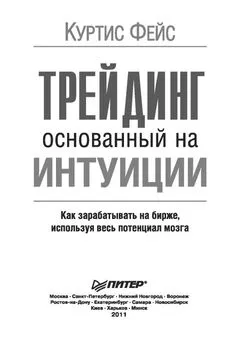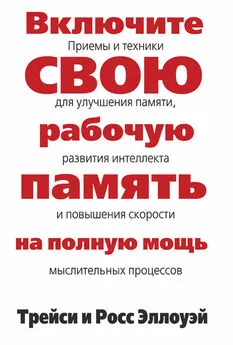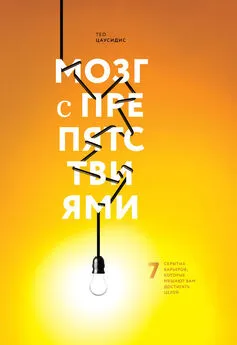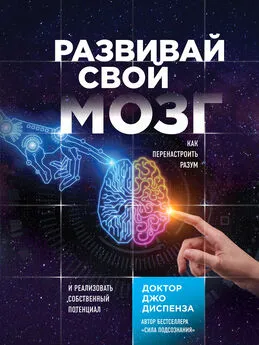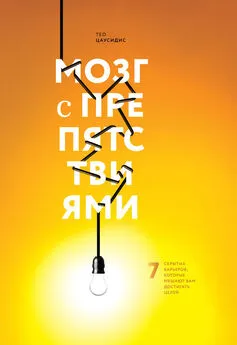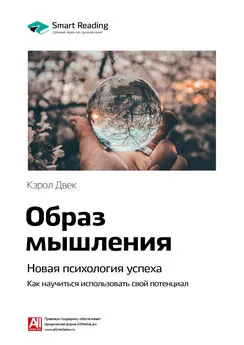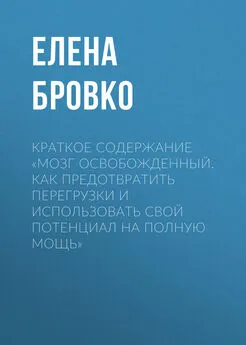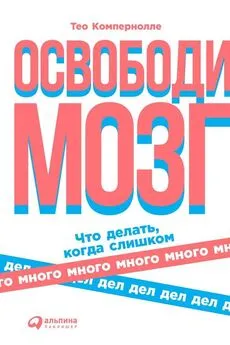Тео Компернолле - Мозг освобожденный. Как предотвратить перегрузки и использовать свой потенциал на полную мощь
- Название:Мозг освобожденный. Как предотвратить перегрузки и использовать свой потенциал на полную мощь
- Автор:
- Жанр:
- Издательство:Array Литагент «Альпина»
- Год:2015
- Город:Москва
- ISBN:978-5-9614-3976-1
- Рейтинг:
- Избранное:Добавить в избранное
-
Отзывы:
-
Ваша оценка:
Тео Компернолле - Мозг освобожденный. Как предотвратить перегрузки и использовать свой потенциал на полную мощь краткое содержание
Мозг освобожденный. Как предотвратить перегрузки и использовать свой потенциал на полную мощь - читать онлайн бесплатно полную версию (весь текст целиком)
Интервал:
Закладка:
Use of caffeinated substances and risk of crashes in long distance drivers of commercial vehicles: case-control study. Sharwood, L. N., Elkington, J., Meuleners, L., Ivers, R., Boufous, S., & Stevenson, M. (2013). BMJ: British Medical Journal, 346.
Cognition enhancers between treating and doping the mind, Pharmacological Research, Cristina Lanni, Silvia C. Lenzken, Alessia Pascale, Igor Del Vecchio, Marco Racchi, Francesca Pistoia, Stefano Govoni, Volume 57, Issue 3, March 2008, pp. 196–213.
Cognitive components of simulated driving performance: Sleep loss effects and predictors, M.L. Jackson, R.J. Croft, G.A. Kennedy, K. Owens, M.E. Howard, Accident Analysis & Prevention, Volume 50, Jan 2013, pp. 438–444.
Slow-release caffeine as a countermeasure to driver sleepiness induced by partial sleep deprivation. De Valck, E., & Cluydts, R. (2001). Journal of Sleep Research, 10(3), pp. 203–209.
Sleep and daytime sleepiness, Timothy Roehrs, Thomas Roth, Caffeine: Sleep Medicine Reviews, Volume 12, Issue 2, April 2008, pp. 153–162.
Is caffeine a cognitive enhancer?. Nehlig, A. (2010). Journal of Alzheimerr?. Nehlig, 20, pp. 85–94.
Energy drink ingredients. Contribution of caffeine and taurine to performance outcomes, Amy Peacock, Frances Heritage Martin, Andrea Carr, Appetite, Volume 64, 1 May 2013, pp. 1–4.
Caffeine antagonism of alcohol-induced driving impairment, Anthony Liguori, John H Robinson, Drug and Alcohol Dependence, Volume 63, Issue 2, 1 July 2001, pp. 123–129.
Cognitive and mood improvements of caffeine in habitual consumers and habitual non-consumers of caffeine. Haskell, C. F., Kennedy, D. O., Wesnes, K. A., & Scholey, A. B. (2005). Psychopharmacology, 179(4), pp. 813–825.
432
Cell phones change the way we walk, Eric M. Lamberg, Lisa M. Muratori, Gait & Posture, Volume 35, Issue 4, April 2012, pp. 688–690.
The effects of personal music devices on pedestrian behaviour, Esther J. Walker, Sophie N. Lanthier, Evan F. Risko, Alan Kingstone, Safety Science, Volume 50, Issue 1, Jan 2012, pp. 123–128.
Did you see the unicycling clown? Inattentional blindness while walking and talking on a cell phone. Hyman, I. E., Boss, S. M., Wise, B. M., McKenzie, K. E., & Caggiano, J. M. (2010). Applied Cognitive Psychology, 24(5), pp. 597–607.
Effects of listening to music, and ofusing a handheld and handsfree telephone on cycling behaviour, Dick de Waard, Koen Edlinger, Karel Brookhuis. Transportation Research Part F: Traffic Psychology and Behaviour, Volume 14, Issue 6, Nov 2011, pp. 626–637.
Mobile telephones, distracted attention, and pedestrian safety, Jack Nasar, Peter Hecht, Richard Wener, Accident Analysis & Prevention, Volume 40, Issue 1, Jan 2008, pp. 69–75.
The effects of mobile phone use on pedestrian crossing behaviour at signalized and unsignalised intersections, Julie Hatfield, Susanne Murphy, Accident Analysis & Prevention, Volume 39, Issue 1, Jan 2007, pp. 197–205.
The cell phone effect on pedestrian fatalities, Peter D. Loeb, William A. Clarke, Transportation Research Part E: Logistics and Transportation Review, Volume 45, Issue 1, Jan 2009, pp. 284–290.
Distracted walking: Cell phones increase injury risk for college pedestrians, Despina Stavrinos, Katherine W. Byington, David C. Schwebel, Journal of Safety Research, Volume 42, Issue 2, April 2011, pp. 101–107.
433
Did you see the unicycling clown? Inattentional blindness while walking and talking on a cell phone. Ira E. Hyman Jr, S. Matthew Boss, Breanne M. Wise, Kira E. McKenzie, Jenna M. Caggiano. Applied Cognitive Psychology. July 2010. Volume 24, Issue 5, pp. 597–607.
434
Pedestrian injuries due to mobile phone use in public places, Jack L. Nasar, Derek Troyer, Accident Analysis & Prevention, Volume 57, Aug 2013, pp. 91–95. http://facweb.knowlton.ohiostate.edu/jnasar/crpinfo/research/AAP3092Accidents_Final2 013.pdf
435
The choice to text and drive in younger drivers: Behavior may shape attitude. P. Atchley, S. Atwood and A. Boulton. Accident Analysis and Prevention. Volume 43, 2011, p. 134.
436
U.S. Safety Board Urges Cellphone Ban for Drivers Matt Richtel. 14 December 2011, New York Times.
437
Mobile Device Use While Driving – United States and Seven European Countries in 2011. Weekly. 15 March 2013, 62(10); pp. 177–182.
438
http://www.iihs.org/laws/maptextingbans.aspx
439
http://www.iihs.org/laws/maphandheldcellbans.aspx
440
California Office of Traffic Safety: http://www.ots.ca.gov/Media_and_Research/Campaigns/Phone_in_Hand. asp High Visibility Enforcement Demonstration Programs in Connecticut and New York Reduce Hand-Held Phone Use. Linda Cosgrove, Neil Chaudhary, and Scott Roberts. NHTSA’S Office of Behavioral Safety Research 2010. http://www.distraction.gov/download/research-pdf/High-Visibility-Enforcement-Demo.pdf
441
Use of Thumbs Confounds Use of Sense. Clyde Haberman. New York Times. 1 Sen 2009.
442
Driving While Distracted. Nationwide. 2008. http://www.nationwide.com/pdf/dwd-2008-survey-results.pdf?NWOSS=survey+2008&NWOSSPos=1
443
U.S. Safety Board Urges Cellphone Ban for Drivers Matt Richtel. 14 Dec 2011, New York Times.
444
Hands-free tech still poses high risk for drivers. AAA wants tech companies to limit what their in-car, hands-free systems can do. Lucas Mearian. Computerworld. 12 June 2013. http://www.computerworld.com/s/article/9240003/Hands_free_tech_still_poses_high_risk_for_drivers
445
Driven to distraction. Drivers and Legislators Dismiss Cellphone Risks. Matt Richtel. New York Times, 18 July 2009.
446
Driven to distraction. Drivers and Legislators Dismiss Cellphone Risks. Matt Richtel. New York Times, 18 July 2009.
447
Editorial. The Global Tobacco Threat. NYT. 19 февраля 2008. Tobacco Firms’ Strategy Limiths Poorer Nations’ Smoking Laws. Sabrina Tavernise. NYT. 13 Dec 2013.
448
Driven to distraction. Drivers and Legislators Dismiss Cellphone Risks. Matt Richtel. New York Times, 18 July 2009.
449
http://abcnews.go.com/US/aarondeveau-found-guilty-landmark-textingdriving-case/story?id=16508694
450
http://www.riskmanagementmonitor.com/coca-cola-hit-with-a-21-milliondistracted-driving-judgement/
451
A field test of the quiet hour as a time management technique, C.J. König, M. Kleinmann, W. Höhmann, Revue Européenne de Psychologie Appliquée/European Review of Applied Psychology, Volume 63, Issue 3, May 2013, pp. 137–145.
452
Цитируется по: Ina Fried http://news.cnet.com/driven%20to%20distraction%20by%20technology/2100-1022_3-5797028.html
453
A comparison of the influence of electronic books and paper books on reading comprehension, eye fatigue, and perception, Hanho Jeong, (2012) “Electronic Library”, Vol. 30 Iss: 3, pp. 390–408.
Reading from an LCD monitor versus paper: Teenagers’ reading performance. Hak Joon Kim, Joan Kim. Computers in Human Behavior. Volume 28, Issue 5, Sep 2012, pp. 1816–1828. http://consortiacademia.org/index.php/ijrset/article/view/170
Taking readingcomprehension exams on screen or on paper? A metacognitive analysis of learning texts under time pressure Rakefet Ackerman, Tirza Lauterman. Computers in Human Behavior. Volume 28, Issue 5, Sep 2012, pp. 1816–1828.
Usability evaluation of E-books. Yen-Yu Kanga, Mao-Jiun J. Wangb, Rungtai LincDisplays. Volume 30, Issue 2, April 2009, pp. 49–52.
Comprehension and workload differ-ences for VDT and paper-based reading. Daniel K. Mayes,Valerie K. Sims, Jefferson M. Koonce. International Journal of Industrial Ergonomics. Volume 28, Issue 6, Dec 2001, pp. 367–378.
454
Digital Detox: Not as easy as it might weem. Matt Haber. New York Times, 9 July 2013.
455
E-mail training significantly reduces email defects, International Journal of Information Management, Anthony Burgess, Thomas Jackson, Janet Edwards, Volume 25, Issue 1, Feb 2005, pp. 71–83.
456
Teresa Amabile and Steven Kramer in HBR.
457
Small Talk steigert die Meetingeffektivitat. Joseph A. Allen und Dr. Nale Lehmann-Willenbrock. Personal Quarterly 02/13.
458
http://www.awayfind.com/product_tour.php
459
Кстати говоря, это типичный пример необдуманного сокращения затрат. В результате руководители вынуждены сами печатать электронные письма и служебные записки – а делают они это зачастую лишь двумя пальцами и крайне медленно. При этом хороший секретарь мог бы сделать эту работу на порядок быстрее, качественнее, за меньшие деньги – и освободить руководителя для более важной умственной работы.
460
Personal communication Loren Frank at UCSF.
461
Stress: Friend and Foe. Theo Compernolle. Synergo 1999/Lannoo 2011.
462
The Effects of Recovery Sleep after One Workweek of Mild Sleep Restriction on Interleukin-6 and Cortisol Secretion and Daytime Sleepiness and Performance. Slobodanka Pejovic, Maria Basta, Alexandros N. Vgontzas, Ilia Kritikou, Michele L. Shaffer, Marina Tsaoussoglou, David Stiffler, Zacharias Stefanakis, Edward O Bixler, George P. Chrousos. American Journal of Physiology-Endocrinology and Metabolism. Опубликовано 13 Aug 2013. http://ajpendo.physiology.org/content/early/2013/08/07/ajpendo.00301.2013
463
http://stereopsis.com/flux/
464
Shut Eye: Encouraging Awareness of Healthy Sleep Recommendations with a Mobile, Peripheral Display. Jared S. Bauer, Sunny Consolvo, Ben Greenstein, Jonathan O. Schooler, Eric Wu, Nathaniel F. Watson and Julie A. Kientz. Conference on Human Factors in Computing Systems, 2012. Full Paper at http://dub.washington.edu/djangosite/media/papers/ShutEye.pdf or http://dub.washington.edu/pubs/301
App at https://play.google.com/store/apps/details?id=com.shuteye
465
Horne, J. A. (10 Feb 2000). Images of lost sleep. Nature, 403, pp. 605–606 – электроэнцефалограмма глубокого сна без сновидений.
466
A brief afternoon nap following nocturnal sleep restriction: Which nap duration is most recuperative? Brooks, A., Lack, L. Sleep. Volume 29, Issue 6, 1 June 2006, pp. 831–840.
467
Stop and revive?: the effectiveness of nap and active rest breaks for reducing driver sleepiness. Watling, Christopher Noel (2012) Masters by Research thesis, Queensland University of Technology.
468
Jet lag: trends and coping strategies, Jim Waterhouse, Thomas Reilly, Greg Atkinson, Ben Edwards, The Lancet, Volume 369, Issue 9567, 31 March – 6 April 2007, pp. 1117–1129.
Читать дальшеИнтервал:
Закладка:

